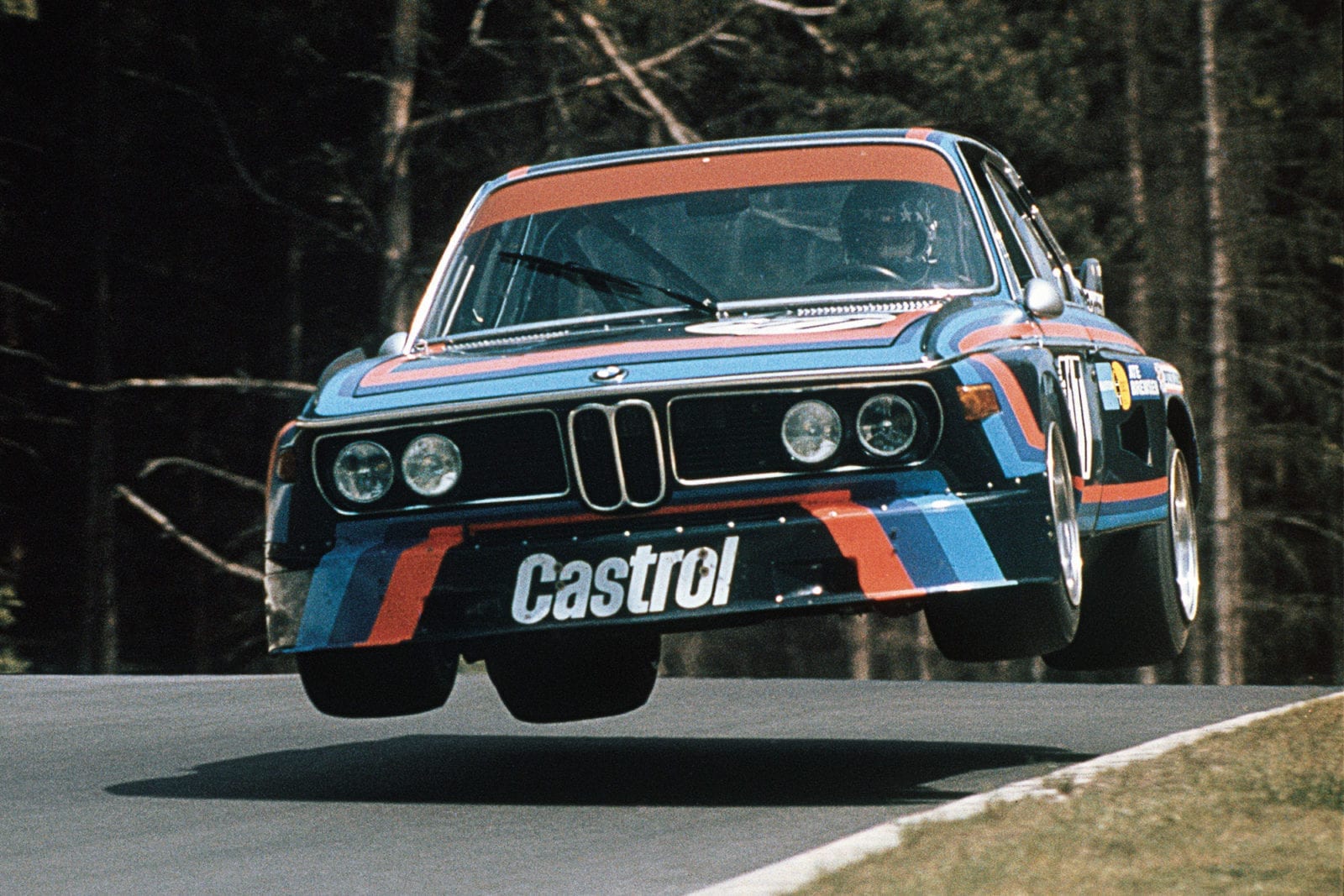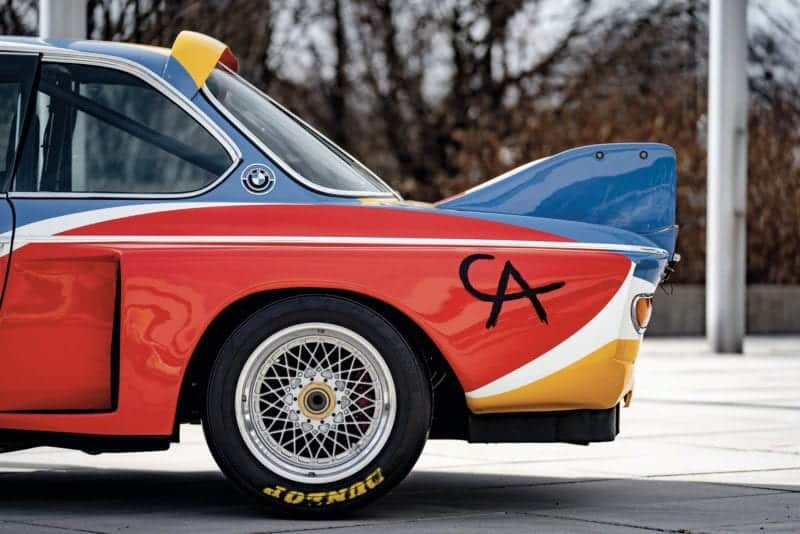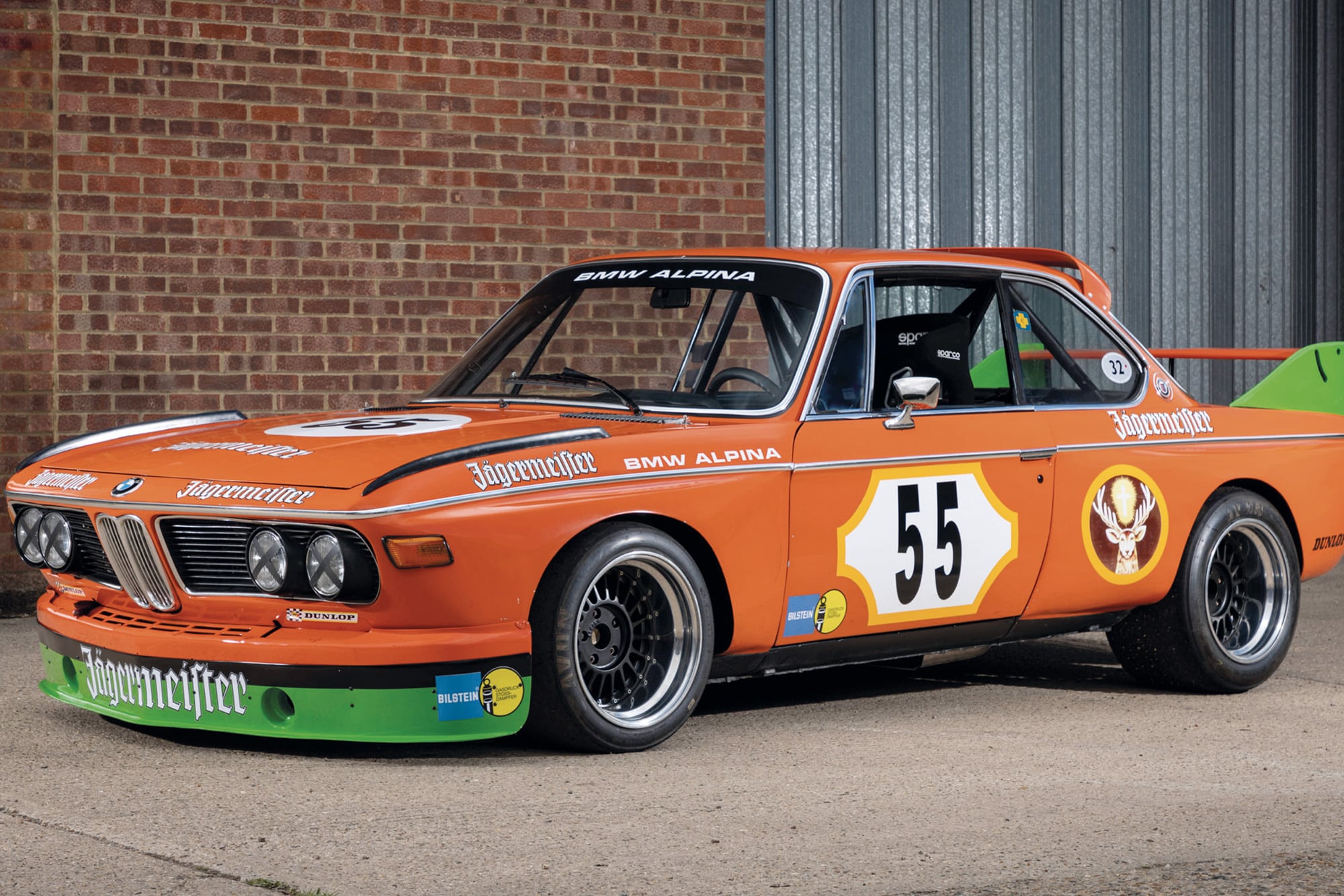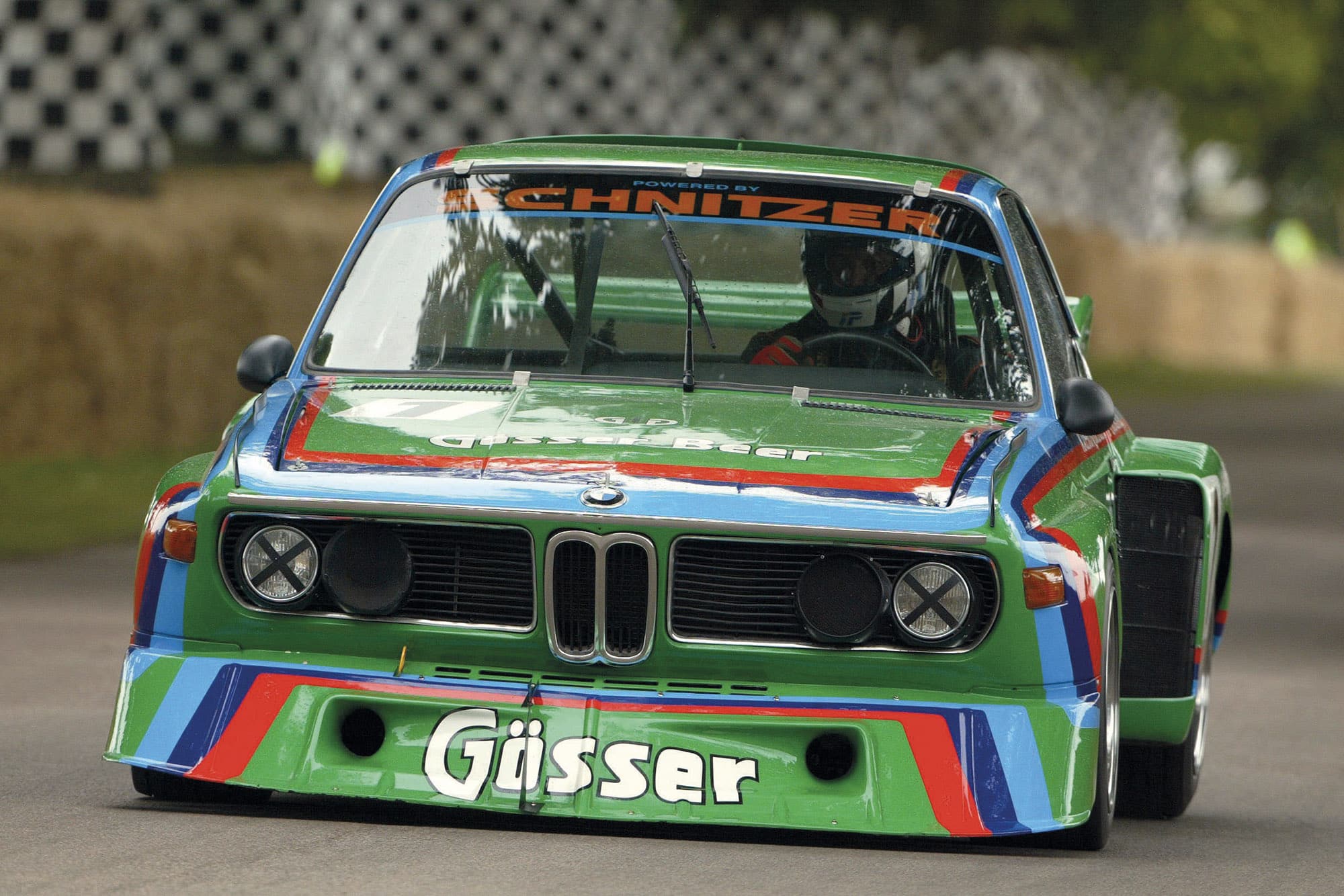Buying guide: BMW E9 CSL ‘Batmobile’
It never wore the badge, but the first M car is a touring hero

More power and aggressive aero: Hans Stuck sends the BMW airborne at the ’74 Nürburgring 1000km
LAT
During the 1970s, the term ‘win on Sunday, sell on Monday’ was the mantra of all manufacturers that went racing. Claiming glory on track at the weekend often had a direct correlation with the showroom floors the following week. No formula epitomised this better than touring cars.
Therefore, when BMW added the svelte E9 coupé to the top of its range from 1968, it was natural that racing would be part of its game plan. But what arose from a simple road car design has gone on to become perhaps the most coveted touring car of them all. The 3.0 CSL ‘Batmobile’ was the result of years of development and effectively launched BMW’s legendary M division.
BMW had no reason to change, aside from to ride with the times. Its earlier 2000Ti and 2002 cars were winning European Touring Car Championship titles and made BMW stable financially after the difficulties of the 1950s.

The ‘Batmobile’ found its way to privateers; here it’s racing at Le Mans in 1974 with the JC Aubriet team
LAT
But the E9 – first released as the 2800 CS – was a big development expense and had far more sporting roots than its predecessors.Based on the 2000 platform, but with the wheelbase and chassis enlarged to fit the all-new 3-litre straight-six M30 engine up front, the car headed the Munich marque’s drive to maximise its return on investment by continuing its winning streak.
As per ETCC homologation rules, 1000 special road cars had to be produced to allow the racers to compete, so BMW dedicated resources to a new division to create the cars. The 3.0 CSL was unveiled at the 1971 Geneva Motor Show, and a year later that division was formally incorporated into BMW, simply titled M, for ‘Motorsport’. Interestingly, none of the huge rear spoilers that were such a defining feature of the 1265 road cars eventually built was ever directly fitted by the factory. German laws made them illegal on the autobahns, so they came in the boot as a removable kit. However, racing was another matter entirely…
“Every ETCC title between 1975-79 was won by a CSL of some shape or form”
As its moniker suggests – Coupé Sport Leichtbau, or ‘Light’ – the CSLs underwent hefty weight reduction, with lighter-gauge steel in the bodywork, all non-essential trim removed, and aluminium panels used for the bonnet, doors and boot lid. The result was a saving of 200kg. The M30 engine’s displacement was enlarged to 3003cc to allow the cars to race in the over 3-litre class, allowing for aggressive development.
While independent tuners such as Alpina and Schnitzer had kept BMW racing with the 2800 CS in the intervening years against biggest rival Ford, BMW’s factory team was reformed in 1973, to coincide with the new model’s debut. While the 3.0 CSL won on its debut at Monza, it wasn’t one of the works entries after a piston failure put out the car of Hans Stuck/Chris Amon, and a wheel bearing accounted for Toine Hezemans/Dieter Quester’s sister entry. That left the Alpina-run version of Niki Lauda/Brian Muir to hold off Ford and give the CSL a famous victory.

The ‘Batmobile’ famously helped launch BMW’s Art Car series in 1975
BMW
The specification of the CSL changed rapidly that year, and by the fourth round – BMW’s home event at the Nürburgring – it had enlarged the M30 to 3.2 litres, with a new crankshaft and a revised aerodynamics package which incorporated a huge frontal air dam, fences on the bonnet flanks and the garish twin rear spoilers – one above the roofline and one on the boot lid. The outlandish appearance led to the nickname ‘Batmobile’ and BMW ruled from then on, winning every other round that year to put Ford in the shade. Hezemans took the drivers’ title and BMW the manufacturers’.
And that was just the start. The 1973-74 oil crisis was a damaging blow to motor sport and led to a reduced programme from BMW, as it opted to sell CSLs to privateers. While Hans Heyer’s Class B Escort RS1600 took the 1974 title as a result, CSLs came to the fore the following year as the most developed car out there. Every ETCC title between 1975-79 was won by a CSL of some shape or form, making it six championships from the car’s seven-year lifespan before its replacement by the 320 for 1980 onwards. The CSL also kick-started BMW’s Art Car culture when the first one was handed over to Alexander Calder in 1975…
BMW E9 3.0 CSL Batmobile
Price new n/a
Price now £200-400,000
Engine BMW M30 inline straight six, 3 litre – 3.5 litre
Rivals Ford Capri RS, Ford Escort RS1600, Alfa Romeo 2000 GTAm
Verdict A milestone for BMW, one of the most distinctive touring cars ever

On the forecourt: 1969 BMW 3.0 CSL Group 2
It started life as a 2800CS, but two of BMW motorsport’s leading lights transformed it into a ‘Bat’
This particular CSL – chassis 220-2572 – started its life as a silver 2800CS road car, which was then delivered directly to famed BMW tuner Schnitzer where it was built to Group 2 specification for the 1970 European Hillclimb season. It was first driven by 1969 European Mountain champion Ernst Furtmayr, who had enjoyed much success with the earlier 2002 model. The car finally found its way onto circuits for 1971, with outings in a series of the world’s most prestigious endurance events – including both the Nürburgring and Spa 24 Hours. Having finished third overall around the Nordschleife, the rest of its first year was much less successful, spinning out at Spa and then getting bogged down in mud during torrential conditions. It then had an engine failure in what would be its final outing in Germany. Fully rebuilt by Schnitzer for 1972, the car was campaigned in Portugal before further work by Alpina eventually converted it into the full ‘Batmobile’ spec with the bodywork additions and engine upgrades. The Jagermeister livery was added for 1974 when it was campaigned by Walter Brun Motorsport. In 1975, it was placed into storage after only a handful of races and resurfaced when marque enthusiast Alex Elliott found it in 1994. After a full restoration, it was bought by Peter Mullen in 2008 and is now offered again for sale, having been a star attraction at events such as the Silverstone Classic and Goodwood Festival of Speed. It comes with an extensive history file and FIA papers. Price is POA.
Fiskens, London Tel: 020 7584 3503, fiskens.com

In the workshop: 1976 BMW 3.5 CSL Batmobile Group 5
Original racing Batmobiles are getting rare as their values skyrocket, but Munich Legends keeps some of the best running
Despite its rather straightforward 1970s engineering, Batmobile CSLs can still require a lot of maintenance, regardless of whether they’re regularly used or not. Independent BMW race and road specialist Munich Legends has a history of caring for CSLs, fettling machines such as the Gitanes-backed car, both original UFO Jeans machines and, more recently, the 3.5-litre Gösser Beer-backed Group 5 car, which underwent a huge restoration after being located in an Indonesian shed back in 1992. “We tend to see a lot more bare bodyshell work on the road variants, as the race cars tend to be well looked after as many have become collectors’ items,” says Munich Legends’ Stuart Draper. “Now, for cars that aren’t regularly used, it can still take about 4-5 days of maintenance to make sure they are all ready to go for a day at the track, checking things like brake lines and engine tuning, and some can have stress fractures or issue with the roll cages. “Mechanically, the CSLs don’t tend to have many common faults. The M30 engines are very strong and you should get between 4-5000km of running before you’ll need a any major engine work. The hardest thing is keeping them original as parts are becoming quite scarce, and you’ll have little change out of £35,000 for an engine rebuild. “But they’re beautiful things, and one of the most famous touring cars out there. Working on one always gives you a great sense of history.”
Munich Legends, East Sussex Tel: 01825 740456, munichlegends.co.uk
